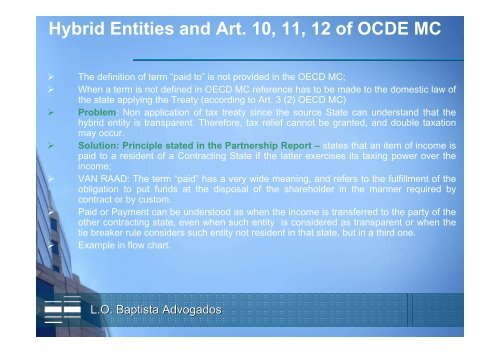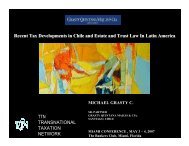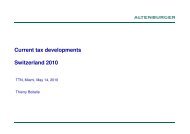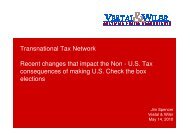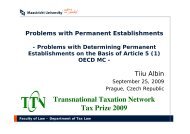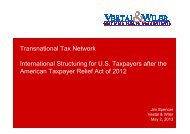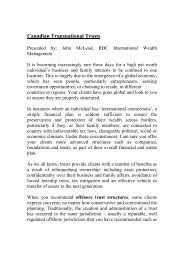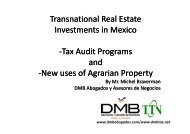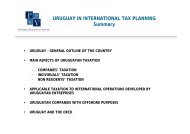Hybrid Entities
Hybrid Entities
Hybrid Entities
Create successful ePaper yourself
Turn your PDF publications into a flip-book with our unique Google optimized e-Paper software.
<strong>Hybrid</strong> <strong>Entities</strong> and Art. 10, 11, 12 of OCDE MC<br />
‣ The definition of term “paid to” is not provided in the OECD MC;<br />
‣ When a term is not defined in OECD MC reference has to be made to the domestic law of<br />
the state applying the Treaty (according to Art. 3 (2) OECD MC)<br />
‣ Problem: Non application of tax treaty since the source State can understand that the<br />
hybrid entity is transparent. Therefore, tax relief cannot be granted, and double taxation<br />
may occur.<br />
‣ Solution: Principle stated in the Partnership Report – states that an item of income is<br />
paid to a resident of a Contracting State if the latter exercises its taxing power over the<br />
income;<br />
‣ VAN RAAD: The term “paid” has a very wide meaning, and refers to the fulfillment of the<br />
obligation to put funds at the disposal of the shareholder in the manner required by<br />
contract or by custom.<br />
‣ Paid or Payment can be understood as when the income is transferred to the party of the<br />
other contracting state, even when such entity is considered as transparent or when the<br />
tie breaker rule considers such entity not resident in that state, but in a third one.<br />
‣ Example in flow chart.<br />
L.O. Baptista Advogados


